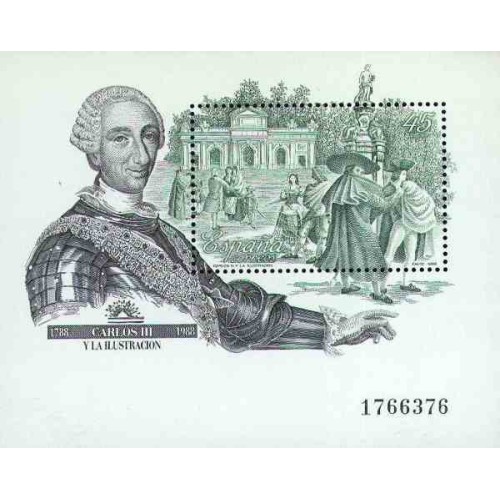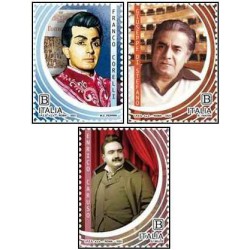- جدید
- ناموجود



توجه : درج کد پستی و شماره تلفن همراه و ثابت جهت ارسال مرسوله الزامیست .
توجه:حداقل ارزش بسته سفارش شده بدون هزینه پستی می بایست 180000 ریال باشد .
توجه : جهت برخورداری از مزایای در نظر گرفته شده برای مشتریان لطفا ثبت نام نمائید.
| Charles III | |
|---|---|

Portrait by Anton Raphael Mengs, c. 1761
|
|
| King of Spain (more...) | |
| Reign | 10 August 1759 – 14 December 1788 |
| Predecessor | Ferdinand VI |
| Successor | Charles IV |
| King of Naples and Sicily | |
| Reign | 15 May 1734 – 6 October 1759 |
| Coronation | 3 July 1735, Palermo Cathedral |
| Predecessor | Charles VI |
| Successor | Ferdinand IV & III |
| Duke of Parma and Piacenza | |
| Reign | 29 December 1731 – 3 October 1735 |
| Predecessor | Antonio Farnese |
| Successor | Charles VI |
| Born | 20 January 1716 Royal Alcazar of Madrid, Spain |
| Died | 14 December 1788 (aged 72) Royal Palace of Madrid, Spain |
| Burial | El Escorial |
| Spouse | Maria Amalia of Saxony |
| Issue Detail |
Infanta Maria Josefa Maria Luisa, Holy Roman Empress Infante Philip, Duke of Calabria Charles IV of Spain Ferdinand I of the Two Sicilies Infante Gabriel Infante Antonio Pascual Infante Francisco Javier |
| House | House of Bourbon |
| Father | Philip V of Spain |
| Mother | Elisabeth Farnese |
| Religion | Roman Catholicism |
| Signature |  |
Charles III (Spanish: Carlos; Italian: Carlo; 20 January 1716 – 14 December 1788) was the King of Spain and the Spanish Indies from 1759 to 1788. While he was the fifth son of Philip V of Spain, he was the eldest son of Philip's second wife, Elisabeth Farnese.
In 1731, the 15-year-old Charles became the Duke of Parma and Piacenza, as Charles I, following the death of his childless granduncle Antonio Farnese. In 1734, as Duke of Parma, he conquered the kingdoms of Naples and of Sicily, and was crowned king on 3 July 1735, reigning as Charles VII of Naples and Charles V of Sicily until 1759. In 1738 he married Princess Maria Amalia of Saxony, daughter of Polish king Augustus III and an educated, cultured woman who gave birth to 13 children, eight of whom reached adulthood. Charles and Maria Amalia resided in Naples for 19 years. Maria Amalia died in 1760.
Charles succeeded to the Spanish throne on 10 August 1759, after the death of his half-brother King Ferdinand VI of Spain who left no heirs. As a result Charles, a proponent of enlightened absolutism, abdicated the Neapolitan and Sicilian thrones on 6 October 1759 in favour of Ferdinand, his third surviving son, who became Ferdinand I of the Two Sicilies.
As King of Spain Charles III made far-reaching reforms such as promoting science and university research, facilitating trade and commerce, and modernising agriculture. He also tried to reduce the influence of the Church and avoided costly wars. His previous experience as King of Naples and Sicily proved valuable as King of Spain. He did not achieve complete control over the State's finances, and was sometimes obliged to borrow to meet expenses. Most of his reforms proved to be successful and his important legacy lives on to this day.[1]
Historian Stanley Payne wrote that Charles III "was probably the most successful European ruler of his generation. He had provided firm, consistent, intelligent leadership. He had chosen capable ministers....[his] personal life had won the respect of the people."[2]
تشکر نظر شما نمی تواند ارسال شود
گزارش کردن نظر
گزارش ارسال شد
گزارش شما نمی تواند ارسال شود
بررسی خود را بنویسید
نظر ارسال شد
نظر شما نمی تواند ارسال شود

check_circle
check_circle

















